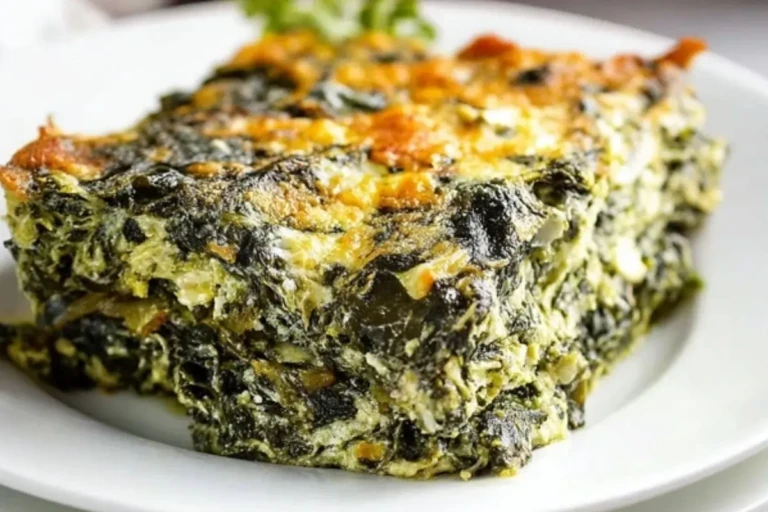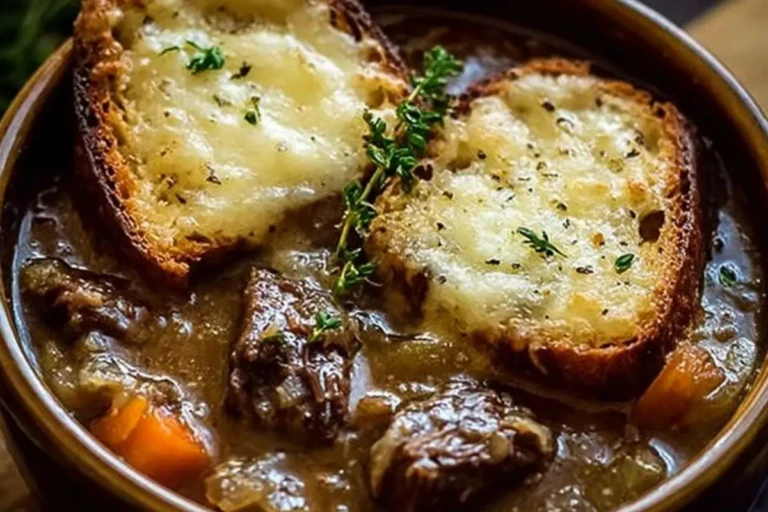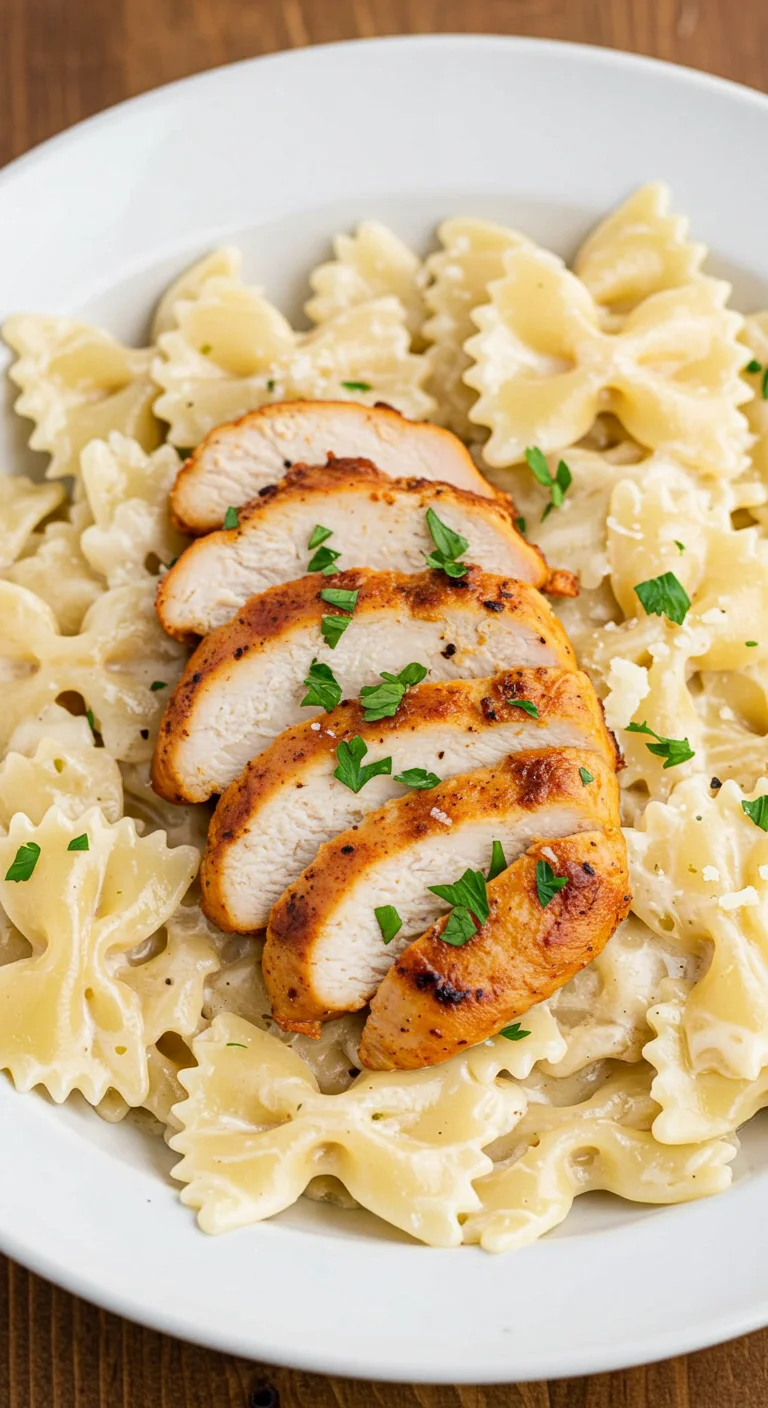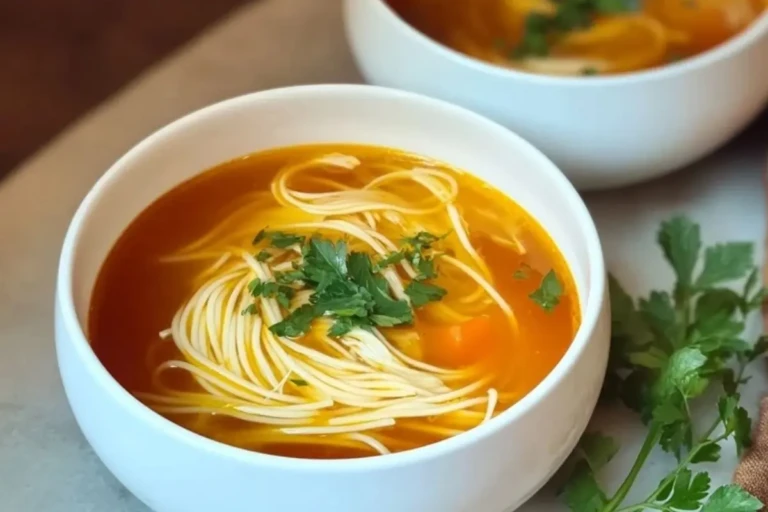Panda Express Chow Mein Recipe
If there is one dish that makes me nostalgic every time I make it, it’s the classic Panda Express Chow Mein. There’s something incredibly comforting about those springy noodles slicked in a savory soy-based sauce and tossed with crunchy cabbage and celery. I’ve been obsessed with recreating this at home, and let me tell you, I nailed it. After trying dozens of versions, my homemade Panda Express Chow Mein is now a regular weeknight favorite.
What I love about this recipe is its simplicity. It doesn’t rely on complicated ingredients or techniques, but rather on getting the textures and flavors just right. That slight crisp on the noodles from the hot pan, the mild sweetness from the onions, and the umami-packed sauce come together so effortlessly. I make it often when I want something fast, tasty, and reminiscent of a cozy takeout night without the delivery fee.
The versatility of this chow mein also makes it a winner. Sometimes I toss in grilled chicken or shrimp, or keep it purely veggie. It’s a perfect side dish to accompany a bigger meal, or it stands strong on its own when I’m looking for a satisfying lunch. If you love Asian-inspired meals, this chow mein is a must-try and definitely deserves a spot in your rotation. For a great pairing, check out my Creamy Garlic Chicken Breasts or the beloved One Pan Chicken with Buttered Noodles for a comforting duo.

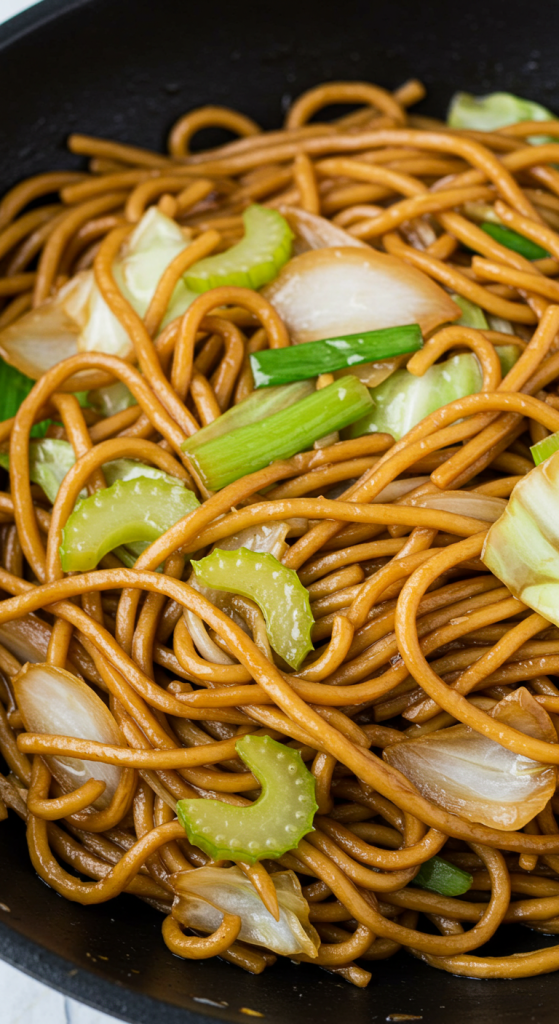
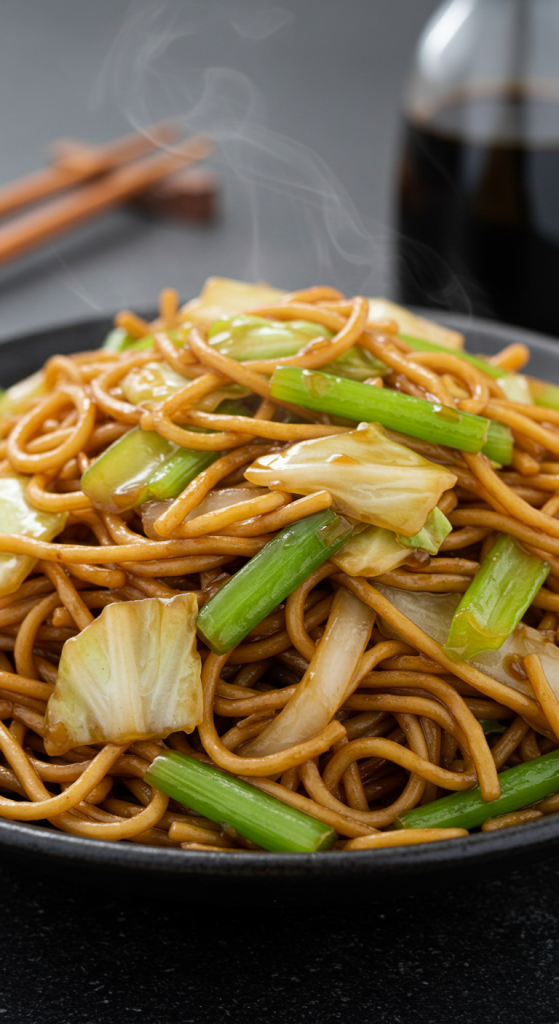
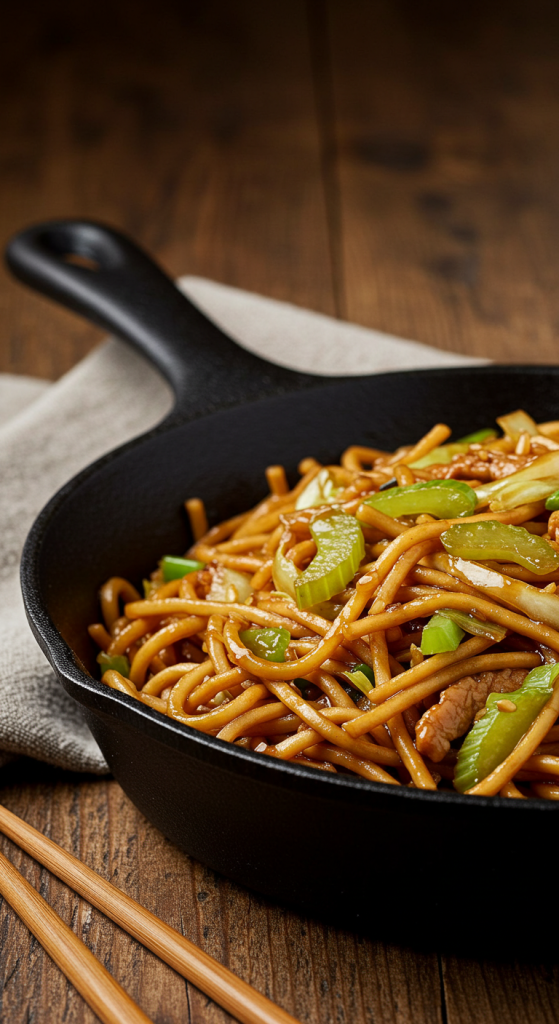
Why You’ll Love This Panda Express Chow Mein Recipe
This chow mein is a crowd-pleaser that captures the flavor of the Panda Express version perfectly but with the added bonus of being homemade. The savory sauce coats every strand of noodle beautifully without overpowering the dish, and the texture of the cabbage and celery adds the ideal crunch to every bite.
You’ll also love how incredibly quick it is to prepare. In just about 20 minutes, you can have a steaming hot skillet of noodles on the table. It’s budget-friendly and can easily be doubled for meal prepping or feeding a hungry family. Whether you serve it with your favorite Asian-style entrees or enjoy it as a standalone dish, you’re in for a cozy, delicious treat.
How to Make Panda Express Chow Mein
Step 1: Prepare the Noodles
Use about 12 ounces of yakisoba noodles or any other thin wheat noodles that resemble the ones from Panda Express. If they come pre-cooked, give them a good rinse under hot water to loosen them up.
Step 2: Prep Your Vegetables
Chop about 2 cups of green cabbage, slice 1 medium white onion, and cut 2 stalks of celery into thin diagonal slices. Set them aside.
Step 3: Make the Sauce
In a small bowl, whisk together 1/4 cup soy sauce, 1 tablespoon oyster sauce, 1 tablespoon brown sugar, and 1/2 teaspoon sesame oil. This simple blend gives the noodles that rich, slightly sweet, umami flavor you love.
Step 4: Stir-Fry
Heat 2 tablespoons of vegetable oil in a large skillet or wok over medium-high heat. Add the onions and celery first and stir-fry for about 2 minutes. Toss in the cabbage and cook for another 2 minutes, just until it’s slightly wilted but still crunchy.
Step 5: Combine Everything
Add the noodles to the skillet and pour the sauce mixture on top. Toss everything together using tongs or chopsticks to ensure the noodles are well coated. Let it cook for another 2 to 3 minutes until everything is heated through and the noodles start to crisp slightly on the bottom.
Recipe Variations and Possible Substitutions
You can personalize your chow mein easily depending on your dietary needs or what’s in your fridge. For a protein boost, add cooked chicken, shrimp, or tofu just before tossing in the noodles. Want it vegetarian or vegan? Use a plant-based oyster sauce or simply omit it. You can also switch out the cabbage for shredded bok choy or napa cabbage for a slightly different crunch.
For a spicier version, add a teaspoon of chili garlic sauce or a pinch of red pepper flakes to the sauce mix. If you’re gluten-sensitive, go for gluten-free soy sauce and noodles to keep everything belly-friendly.
This dish is flexible enough that a few tweaks won’t compromise its soul. It’s meant to be simple, satisfying, and stress-free—just the way your weeknight meals should be.
Serving and Pairing Suggestions
This Panda Express Chow Mein works beautifully as a side or as a main dish depending on your appetite. When I serve it as a main, I like to top it with grilled chicken or tofu and a sprinkle of sesame seeds. If you’re serving it alongside other dishes, it complements Asian-inspired mains such as teriyaki chicken, sweet and sour pork, or Korean BBQ beef.
Don’t forget a refreshing side like a cucumber salad or lightly steamed broccoli to balance out the meal. And for those spice lovers, a drizzle of Sriracha or a spoonful of chili crisp takes it to another level.
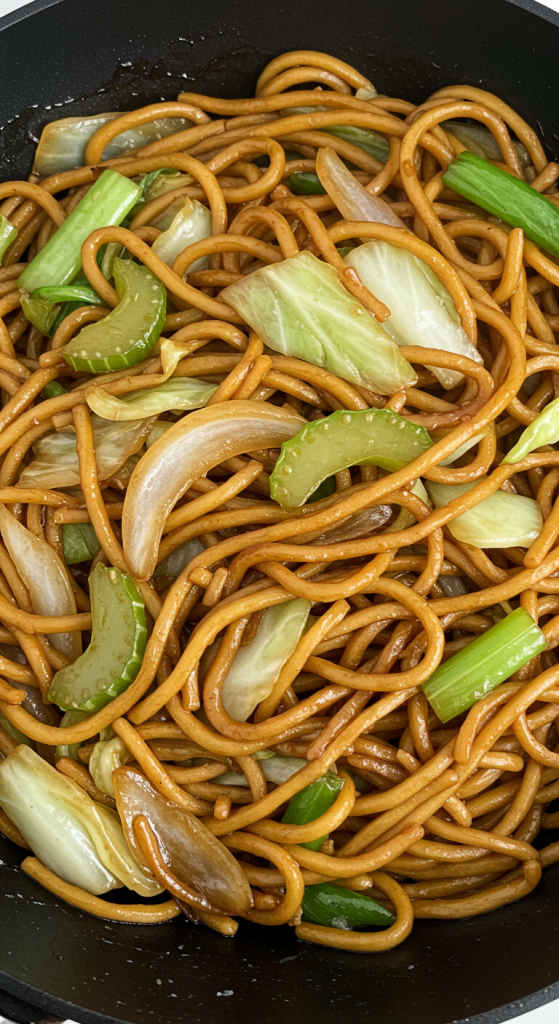
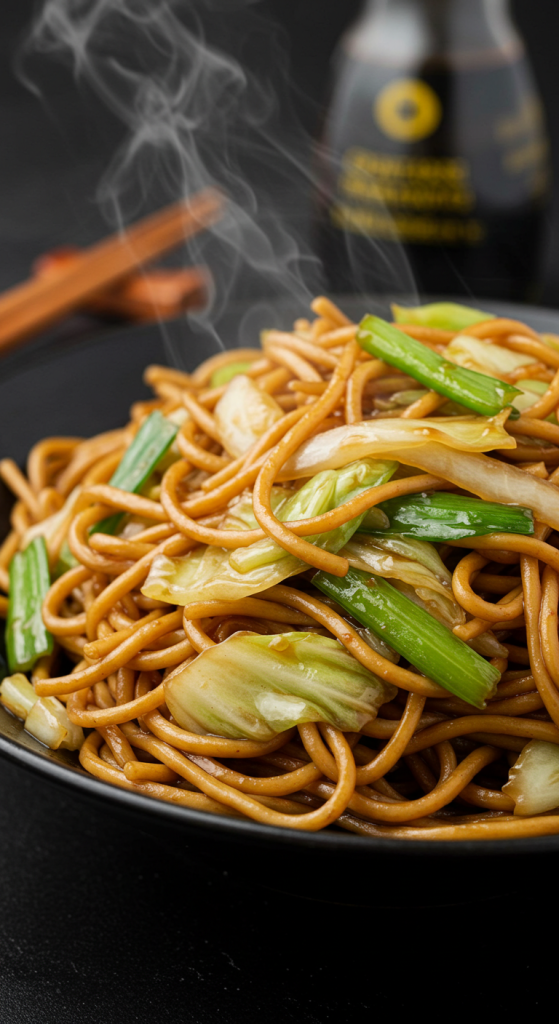
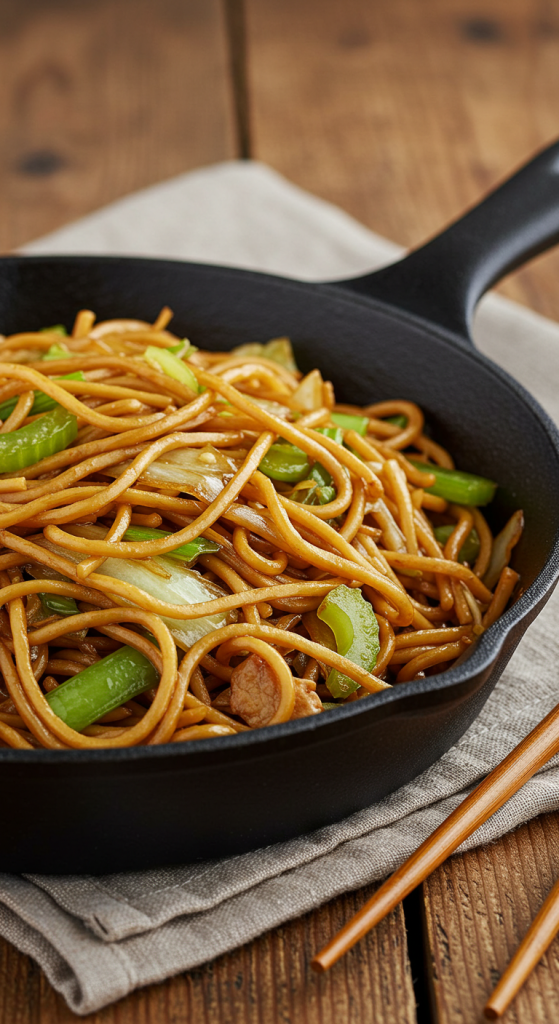
Storage and Reheating Tips
Store any leftovers in an airtight container in the refrigerator for up to 4 days. The flavors actually deepen a bit after a night in the fridge, making for an even more savory next-day meal.
To reheat, you can microwave it in 30-second bursts, stirring in between, or reheat it in a non-stick skillet over medium heat with just a splash of water or soy sauce to revive the noodles. Avoid freezing, as the texture of the noodles doesn’t hold up well after thawing.
Frequently Asked Questions
Can I use spaghetti instead of yakisoba noodles?
Yes! While yakisoba noodles give the most authentic texture, regular spaghetti can be used in a pinch. Just make sure to cook it al dente so it doesn’t turn mushy during stir-frying.
Is this recipe vegetarian?
The base recipe includes oyster sauce, which is not vegetarian. To make it vegetarian, simply use a vegetarian oyster sauce or leave it out and add a bit more soy sauce for depth.
How do I make it gluten-free?
Use gluten-free soy sauce (like tamari) and substitute with rice noodles or any gluten-free noodle alternative you enjoy.
Can I add more vegetables?
Absolutely. Shredded carrots, bell peppers, mushrooms, or snow peas all make delicious additions. Just adjust the cooking time slightly so they keep a bit of crunch.
Can I double the recipe for a crowd?
Yes, just make sure your pan or wok is big enough. If not, cook in batches to keep everything from getting soggy. The recipe scales up easily for family dinners or potlucks.
Related Recipe You’ll Like
If you loved making Panda Express Chow Mein at home, you’ll definitely want to try some of my other Asian-inspired dishes. One that pairs wonderfully with this chow mein is the Creamy Garlic Chicken Breasts. The richness of the garlic sauce complements the simplicity of the noodles perfectly.
Another reader favorite is my One Pan Chicken with Buttered Noodles, especially for those who love easy cleanup and comfort food in one pot. If you’re into bold flavors and hearty dinners, my Creamy Tuscan Sausage Pasta will be right up your alley.
These dishes share the same accessible ingredients and quick cooking times, making them ideal for busy weeknights when you still want a home-cooked meal full of flavor.
Save and Share This Recipe for Later
Loved this recipe? Don’t forget to save it for later! Pin it to your favorite recipe board on Pinterest so you can find it the next time your noodle craving hits. You can also share this post with your friends and family on Facebook or Instagram. There’s nothing better than spreading a little delicious inspiration. And if you make it, tag me so I can see your version—I’d love to know how it turned out!
Panda Express Chow Mein Recipe
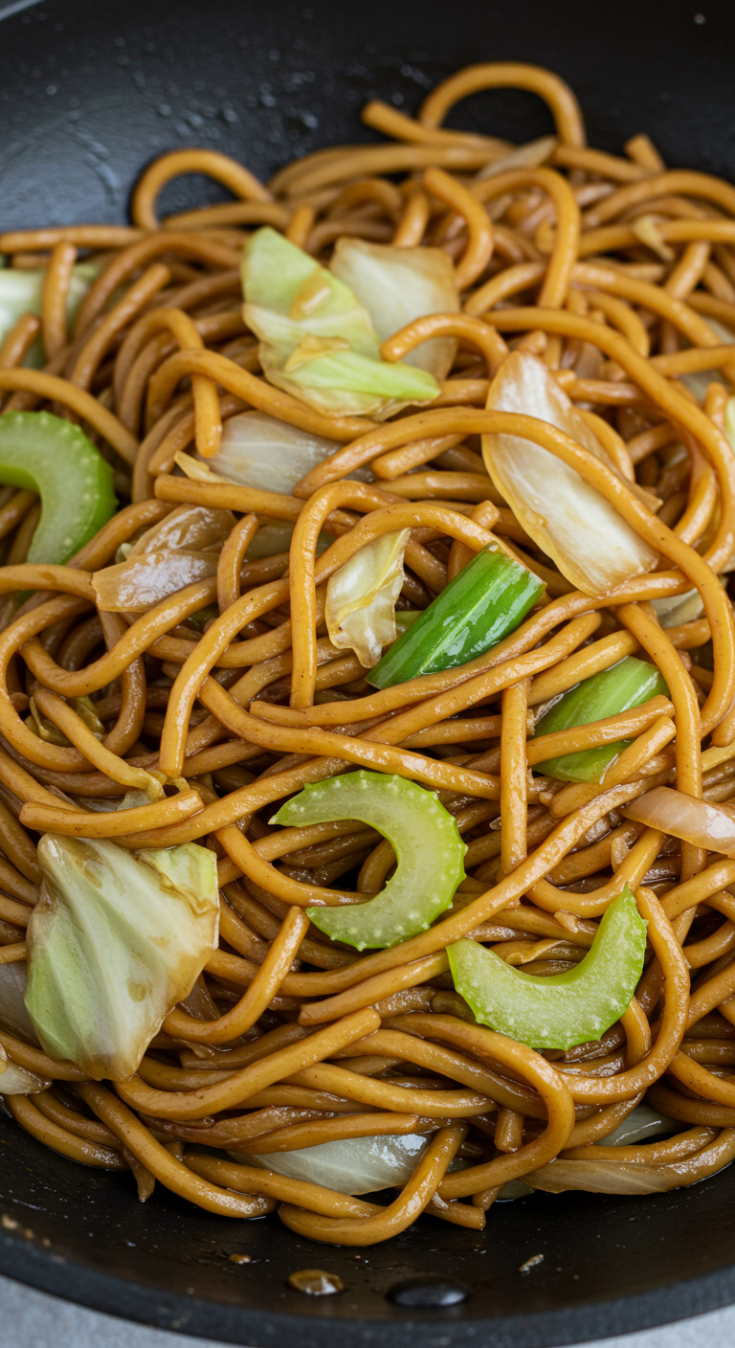
This Panda Express Chow Mein recipe is a homemade version of the iconic takeout favorite. Featuring stir-fried yakisoba noodles tossed with sautéed cabbage, celery, and onions in a savory soy-based sauce, this dish delivers that same irresistible umami flavor you crave. Quick to prepare and made with pantry staples, it's the perfect weeknight dinner that's both satisfying and customizable. Whether served solo or paired with your favorite Asian entrées, this chow mein brings the bold flavors of Panda Express to your home kitchen.
Ingredients
- 12 oz yakisoba noodles (or thin wheat noodles)
- 2 cups green cabbage, chopped
- 1 medium white onion, sliced
- 2 stalks celery, diagonally sliced
- 2 tbsp vegetable oil
- 1/4 cup soy sauce
- 1 tbsp oyster sauce
- 1 tbsp brown sugar
- 1/2 tsp sesame oil
Instructions
- Rinse and loosen the yakisoba noodles under hot water if pre-cooked.
- In a small bowl, mix soy sauce, oyster sauce, brown sugar, and sesame oil. Set aside.
- Heat oil in a large skillet or wok over medium-high heat.
- Add onions and celery. Stir-fry for 2 minutes.
- Add cabbage and cook another 2 minutes until slightly wilted.
- Add the noodles and sauce mixture. Toss well to combine.
- Stir-fry for another 2 to 3 minutes until noodles are heated and slightly crisp.
- Serve hot as a side or main dish.
Notes
- Substitute spaghetti noodles in a pinch, cooked al dente.
- For a vegetarian version, use vegetarian oyster sauce or omit it.
- Add grilled chicken, shrimp, or tofu for extra protein.
- Avoid freezing to maintain noodle texture.
- Reheat in a skillet with a splash of soy sauce or water.


